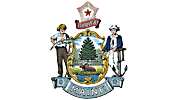One-way ticket to Acadia of Lands and Forests
 My travelogue is filled with stamps from l'Acadie. I've visited the coastal villages of Nova Scotia, met my cajun cousins during a Fais Do Do and explored the Acadian Peninsula to the sound of the local radio stations. I had yet to discover Acadia of the Lands and Forests, host of the Congrès mondial acadien 2014.
My travelogue is filled with stamps from l'Acadie. I've visited the coastal villages of Nova Scotia, met my cajun cousins during a Fais Do Do and explored the Acadian Peninsula to the sound of the local radio stations. I had yet to discover Acadia of the Lands and Forests, host of the Congrès mondial acadien 2014.
The south's valleys display a new world as I follow the stream of the Saint John River. The Trans-Canada highway is an express passage for thousands of visitors, yet its secrets remain hidden within the outskirts of its four lanes. Route 2 leads the way towards Grand-Falls' Portage Street. Geographical and cultural borders fade away as the Francophone communities emerge; Saint-André, Saint-Léonard, Rivière-Verte, Saint-Basile.
Edmundston's Hébert boulevard introduces Acadia of Land and Forests. The commercial street unveils the city's downtown. Mountains and valleys shape the scenery. The Saint John river serves as a thin line between Canada and United States, yet Maine and the city of Madawaska are no strangers on the edge of the stream.
The green spaces and forests link the truck stops. Dégelis is the gateway to Témiscouata and the province of Quebec. The words are shaped by a common history of forestry and the meeting of the three Acadias. North, South, East and West are invisible landmarks. The paths begin where the villages lead, as the unexpected is the greatest travel companion.
The Acadian identity lives in monuments and breathes through the silence of the woodlots. History is written on a daily basis, through the music of songwriters and the citizens' economic initiatives. The Congrès mondial acadien showcases the region as it welcomes the world and turns itself to its future. The scene is grandiose.






















